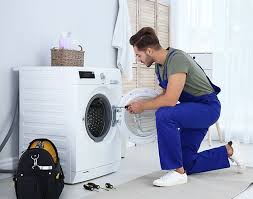Splice Connectors, Their Types, and Usage

Splice connectors are identified as plastic clips that are most commonly used for making wire connections with two or more wires. The connections are also known as splices hence the name splice connectors is given to them. Splice connectors are designed for use with telephone cables, electrical cables, and electrical device wires.
A splice connector comprises a plastic clip that has a sharp metal insert used for safely cutting through the plastic insulating jackets of two wires and crimps them together. The splice connector then snaps into place and tightly holds the wire connection. With the use of splice connectors, you do not have to connect wires through soldering. Hence this makes wire connections much easier.
Types of Splice Connectors
There are various types of Splice Connectors that vary depending upon their construction and applications. Some of the commonly known types of splice connectors include the following:
Crimp Butt Splice Connectors
Crimp butt splice connectors are shaped like tubes and feature two crimps that are used for connecting wires in line. They usually have a metal tube that is enclosed in an insulated covering. Crimp butt splice connectors are commonly used for changing, lengthening, or repairing conductors in an electrical circuit. With such use, you can purchase crimp butt splice connectors according to your requirements.
The crimp butt splice connectors are attached by putting the stripped ends of the two stranded wires inside both ends of the terminals. After doing that, you can use a crimping tool to ensure that a tight connection is formed between the wires.
Crimp Closed-End Connectors
Crimp close-end connectors are used for terminating wires and also to seal them and protect them from moisture and oxygen which can lead to corrosion. Terminators in electronic transmission lines avoid any reflections that can occur at unterminated transmission lines that can definitely lead to some kind of distortions like video ghosting in analog signal systems. you will find various sizes of crimp closed-end connectors that are appropriate for wires of different diameters. There are also adjustable ones available that can provide more flexibility and accomplish the tasks you want to use them for.
Crimp Barrel Foil Terminal
Crimp barrel foil terminals are connectors that are mainly used for providing a reliable connection and also allow for efficient heat dissipation. They are available in many formats and sizes and are widely used across the application in many industries and hobbies. It is always better to be well informed about such items before purchasing and using them for certain applications. This will make sure that you achieve your task as it is required.
Push Wire Terminal
Push wire terminals are known for providing secure, reliable, and fast connections. It is also effective for the distribution of connectors in electrical housing applications.
Push-in wire connectors are rather new styles of wire connectors that strip a small amount of insulation from the wire before inserting it into one of the holes in the connector. Once it is put into place the wire is permanently secured and locked in that place.
How to Use a Splice Connector?
A useful tip you must take into consideration before making the splice connections is to leave an extra 6-12 inches of cable to create a small slack near the splice in case there will be a need to make more splices with the cables at a later point.
- Strip an inch of the insulation jacket and the inner foil shield from the ends of the cables that you will connect together. Let the interior individual wires that are covered in colored plastic insulating jackets.
- Embed one of the singular interior wires from one wire into the wire opening of the splice connector. Push the finish of the wire as far as possible. Most connectors accompany a reasonable side that permits you to check whether you have embedded the wire as far as possible or not. insert a similar colored wire from the other link into the other wire opening of the Splice Connectors.
- Then by using pliers you can tighten the wire connection by placing them in the plier jaws and applying pressure. The splice connection will cut through the two wires and clamp them together to form a tight connection. Keep repeating the same procedure with the rest of the wires on other cables.
- You can secure the splice connection by using a plastic zip tie. Which prevents the splice connections from being pulled away from each other. Wrap the zip tie around the lower part of the stripped insulation jacket of both cables and tie it. Then with a pair of scissors, trim the end of the zip tie.




